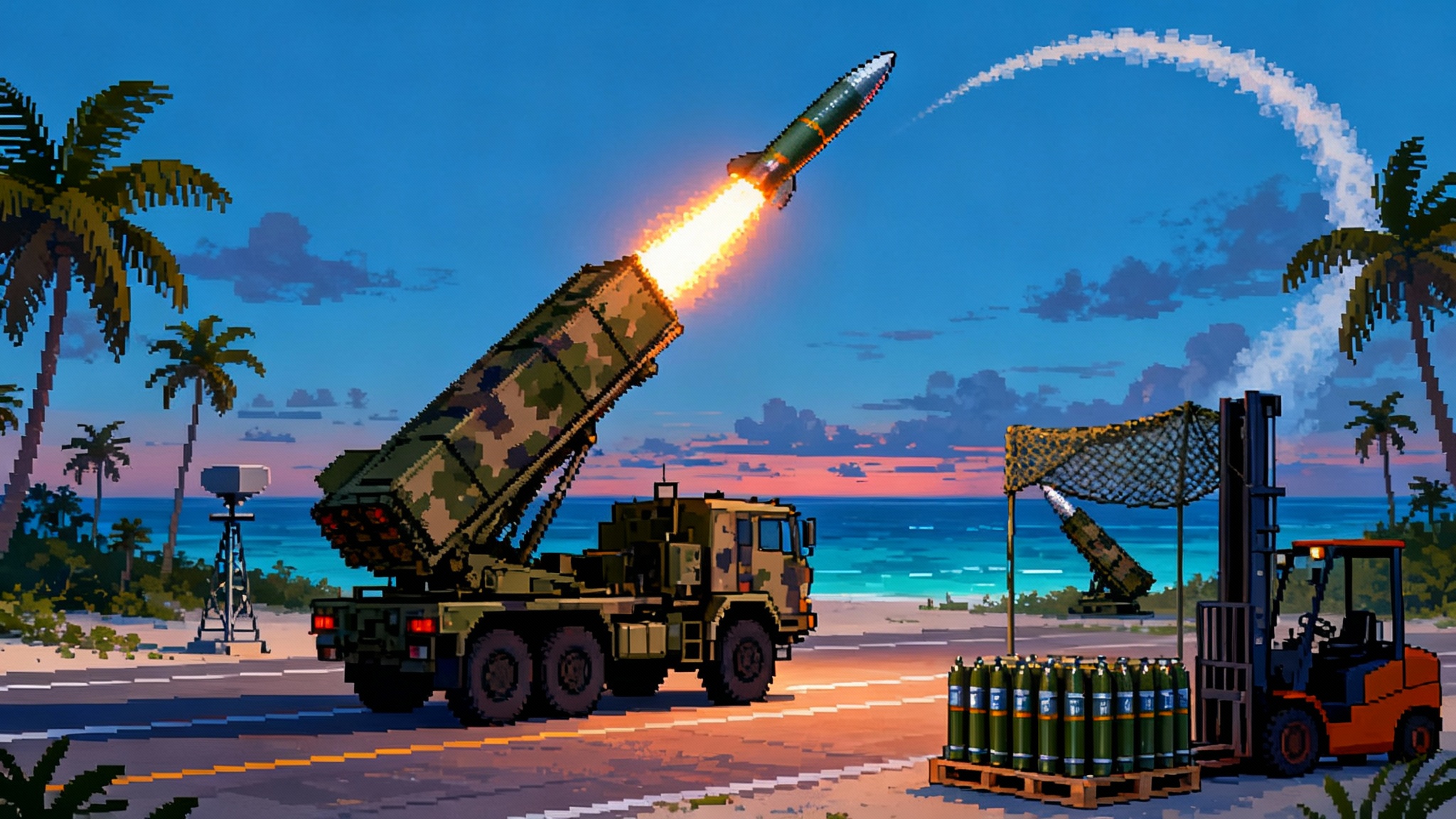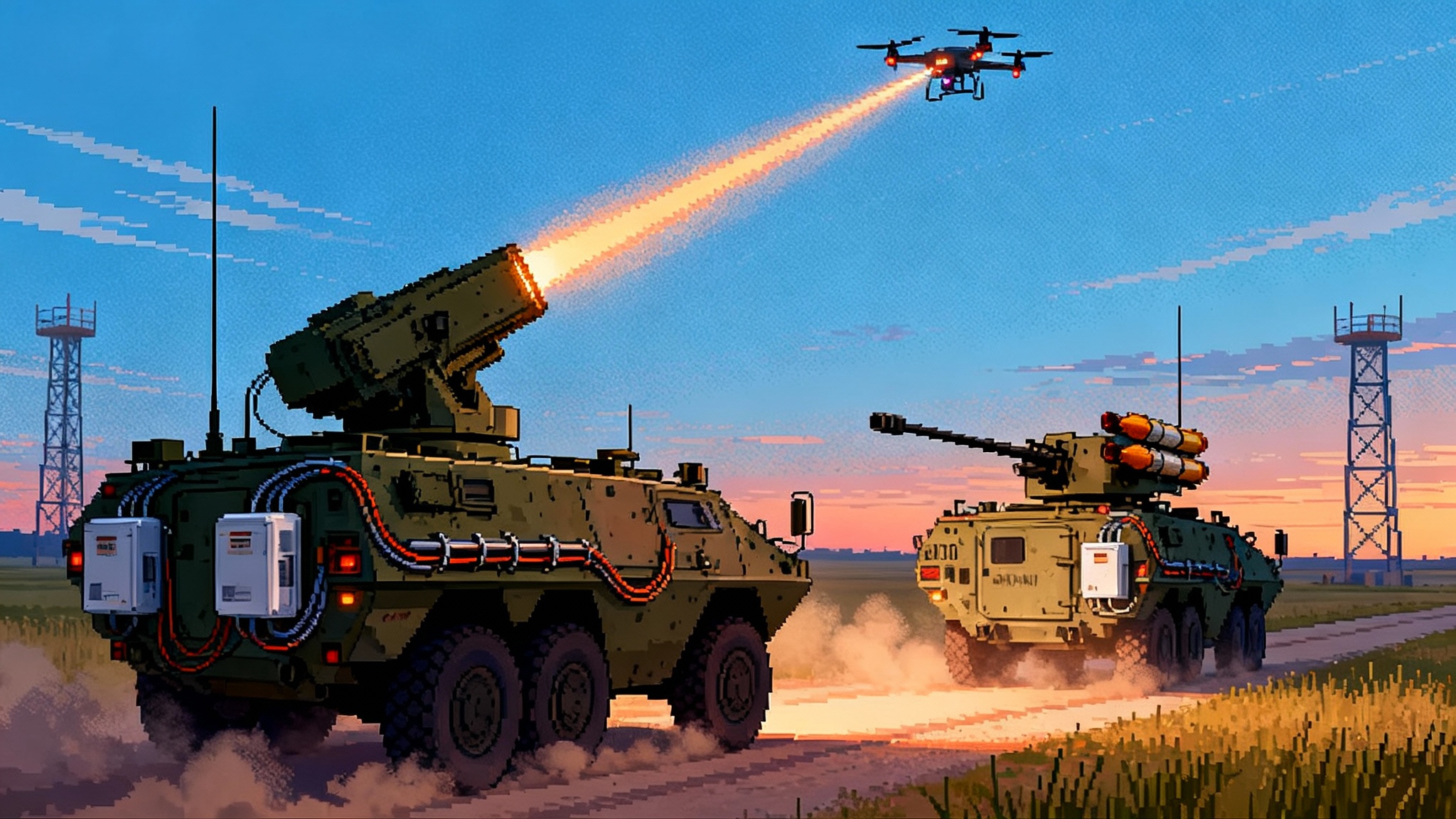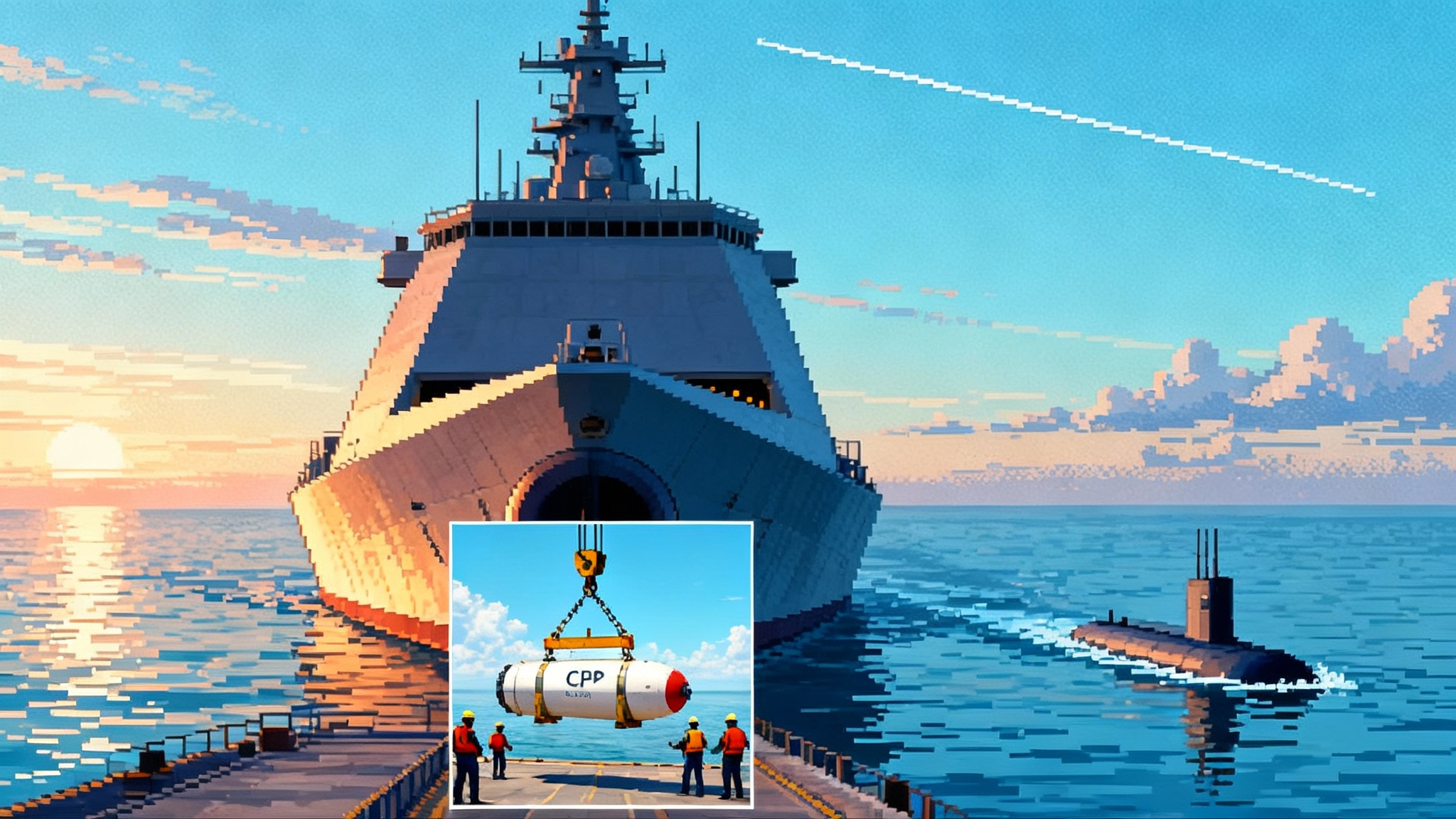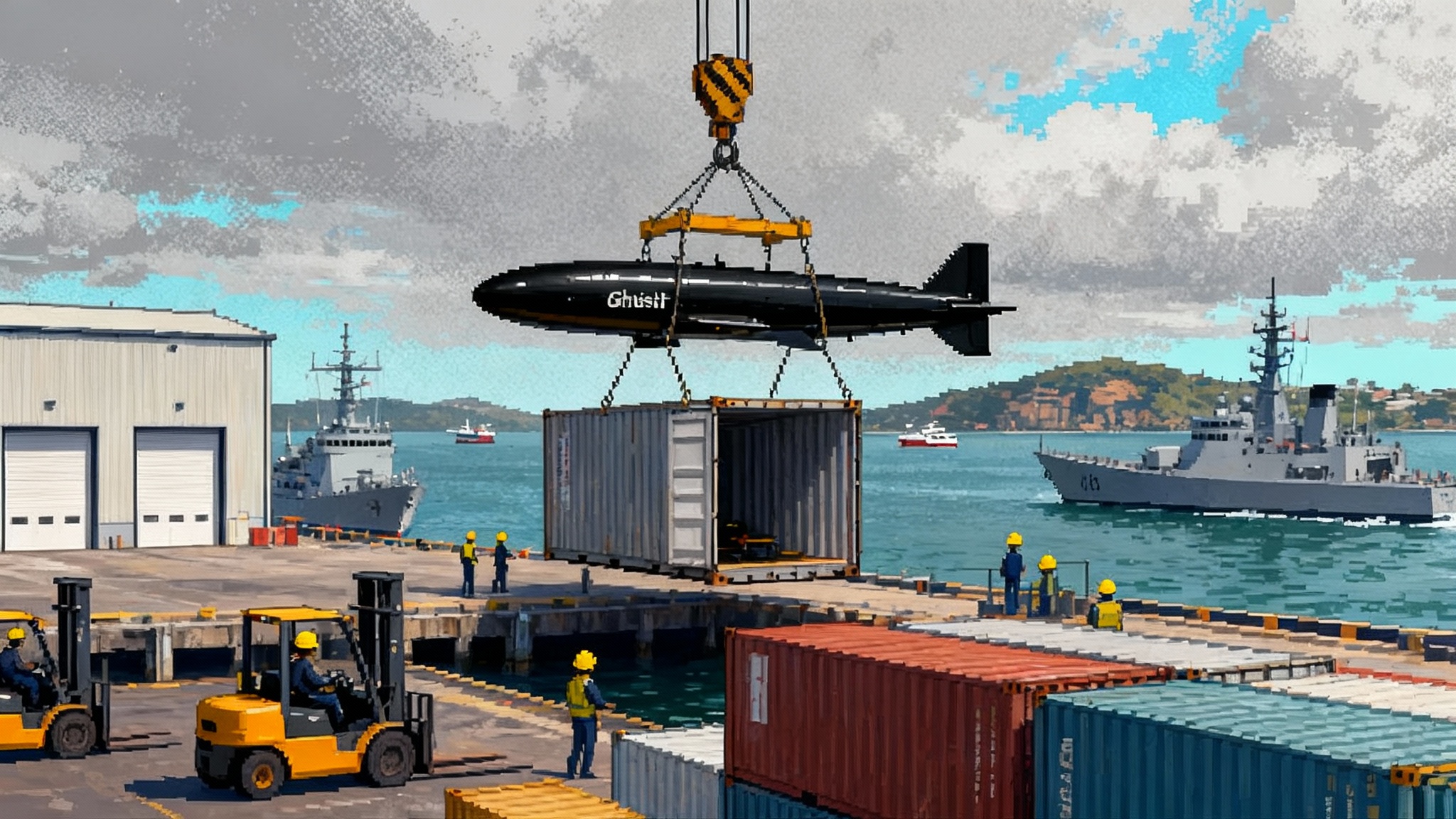Microwaves vs Swarms: 2025’s High Power Counter UAS Breakout
From Army second-generation buys to Marine expeditionary trials and high-mass demos, 2025 turned high-power microwaves from promise to plan. See how one-to-many effects rewrite shot doctrine and what to accelerate through 2026 and 2027.

The year high power microwave stopped being a science fair project
Every few years a defense technology makes the short list of things that change the rules rather than just the score. In 2025, high power microwave moved into that category for countering uncrewed aircraft systems. High power microwave, often shortened to HPM, uses bursts of electromagnetic energy to disrupt or burn out the electronics inside drones. The effect is one to many. A single pulse can upset multiple airframes at once when they are packed into a formation or moving through the same volume of air.
Three milestones define the year. The United States Army moved from prototypes to second generation buys, signaling a shift from experimentation to fielding. The United States Marine Corps ran expeditionary trials with vehicle mounted and palletized HPM to learn how these systems travel, set up, and fight alongside Marines under austere conditions. And high mass demonstration events showed that properly cued HPM could collapse dense drone attacks with very few operator actions. None of this happened in a vacuum. It built on years of laboratory work, early prototypes like the Air Force Research Laboratory family known as THOR and Mjolnir, and industry systems such as Epirus Leonidas and Raytheon HPM testbeds. For context on how directed energy is changing short range air defense, see Army lasers go live.
What changed in 2025 is not only technical maturity. The operational question finally got a practical answer: how do you stop dozens of small drones without running out of missiles, overheating a laser, or spraying the sky with ammunition over a populated area. The answer is to add a microwave layer that turns magazine depth into a function of power generation rather than shipping containers of interceptors.
One to many resets how we think about shots and magazines
If a platoon on the edge of a city faces 50 quadcopters arriving over 90 seconds, there are only a few choices. You can shoot guns and short range missiles and hope you do not run dry. You can use a high energy laser and watch the heat build in the optics while the next wave arrives. Or you can fire an HPM pulse shaped like a wide flashlight beam that washes across the formation. Instead of killing drones one at a time, the pulse disturbs flight controllers and data links across a cluster. Think of it as a sudden magnetic storm localized over a football field.
This one to many effect resets the arithmetic of air defense. In a missile centric fight, the defender loses if the attacker can present more inbound objects than the defender has shots. In an HPM enabled fight, the defender’s limiting factor is available electrical power and thermal management, not the number of physical rounds. Empty magazines become low batteries. Resupply shifts from tractor trailers of munitions to mobile power modules and spare emitter heads. That is a fundamental change for logistics planners and for commanders who must weigh how long they can hold a position under persistent drone harassment. For how mass and attrition pressures are evolving at theater scale, see Replicator mass in the Pacific.
There is a second way one to many changes doctrine. HPM is agnostic to the exact configuration of the airframe within its footprint. If three different quadcopters, a fixed wing small uncrewed aircraft, and an improvised loitering munition are in the same lobe of energy, they all feel it. That simplifies targeting decisions during swarm attacks when identification by type is less important than rapidly reducing the number of air vehicles in the air.
The 2025 milestones and why they matter
-
Army second generation buys: A second generation purchase is a quiet but consequential signal. It means the first iteration survived soldier touch, reliability screens, and safety checks and still offered enough value to justify more. This year the focus moved to shorter setup times, better beam control, and integration with existing fire control. Importantly, program managers targeted sustainment knobs rather than exotic performance promises. The aim was not to chase another five percent of power. It was to cut mean time to repair and simplify field maintenance so units could keep the systems up for weeks.
-
Marine Corps expeditionary trials: The Marine Corps tested HPM against the living problems of expeditionary logistics. How do you sling or palletize the package for rapid movement between islands. What happens when salt air and dust meet high voltage hardware. How do you protect civilians if the system must emit near a harbor or a highway. Trials focused on simple drill downs. Can a small team emplace and displace without heavy equipment. Can the system ride on a Joint Light Tactical Vehicle, a trailer, or a small landing craft and stay within weight and stability limits. Marines also pushed early concepts for mixing HPM with Marine Air Defense Integrated System components so that radar, electro optical sensors, jammers, guns, and HPM share a picture and a plan.
-
High mass demonstrations: Demonstrations with dozens of drones in the air at once validated the core value proposition. When cued by radar and electro optical tracks, HPM operators used a handful of pulses to force swarms to break formation, lose links, or fail. The goal was not cinematic fireballs. It was to make the air picture go from dense to sparse in seconds so that remaining threats could be handled by guns or missiles. Observers consistently reported that operator workload dropped because the number of aiming actions fell dramatically once HPM took the first bite out of the swarm.
None of these milestones alone would have carried the argument. Together they did. Second generation purchases signaled confidence. Expeditionary trials proved that deployment and safety questions are manageable. Demonstrations made costs tangible by showing how a single energy burst can replace many shots.
Pairing HPM with sensing, autonomy, and unmanned carriers
High power microwave does not replace the rest of the counter uncrewed aircraft stack. It multiplies it. The most effective configurations in 2025 all used three ingredients beyond the emitter itself.
-
Radars and multi sensor cueing: Modern short range radars can track small drones with radar cross sections measured in square centimeters. When fused with electro optical trackers and passive radio frequency sensing, they generate a robust picture and cut false tracks. For HPM this fusion matters because the emitter is most efficient when it waits for the right geometry. The system wants swarms or tight clusters. With good cueing, commanders can hold fire until the formation is bunched inside an engagement lobe rather than spraying energy at empty air.
-
Artificial intelligence enabled control: Autonomy helps in two ways. First, it automates the hunt for optimal aim points by predicting where a cluster will be when the pulse arrives. Second, it routes emissions to avoid friendly aircraft and protected spectrum. In practice this looks like a heat map on the operator display that brightens when a cluster is entering the sweet spot, then dims when the cluster breaks apart. The operator still decides, but the system does the math at machine speed. For a look at how AI-enabled teaming is maturing, see USAF loyal wingmen tests.
-
Unmanned carriers for maneuver protection: An emitter and its power and cooling hardware weigh hundreds to thousands of pounds depending on the design. Uncrewed ground vehicles such as the General Dynamics Land Systems TRX class can carry that payload while keeping humans out of the immediate hazard area. A TRX size robotic vehicle can distribute coverage along a convoy, run ahead to hold a choke point, or loiter as a picket near a bridge. It can also accept risk by turning into the direction of the swarm and sitting in the most exposed position. That is hard to do with a manned truck.
When these elements are paired, maneuver units gain something they have lacked against drones. They gain a moving protective bubble whose shape can be steered. The bubble is not perfect, and it does not replace shooters. But it blunts the opening mass of a swarm, lowers the volume remaining for guns and missiles, and preserves scarce interceptors for items that must be killed one by one.
How HPM changes the playbook for commanders
Commanders in 2025 began to write new standing procedures around HPM. Several patterns stood out.
-
Staggered defense in depth: Units positioned HPM forward to take the first slash at clusters, with lasers or guns following up on survivors, and missile batteries behind them holding for higher value targets. This reduced fratricide risk because HPM left no debris on the immediate line of fire and did not throw rounds over friendly troops.
-
Battery management as a tactical drill: Leaders treated power levels like ammunition counts. They rotated emitters to let mobile generators and battery packs recover. They understood that a well planned five minute cooldown could prevent a catastrophic gap later.
-
Aggressive hunting: Rather than waiting for swarms to arrive over defended assets, unmanned HPM carriers patrolled short approaches and likely launch corridors. When a radar picture thickened, they moved to intersect and fire into formation geometry that offered the best leverage. This created a new form of ambush that worked in both urban and open terrain.
-
Civilian safety and spectrum discipline: Units trained to quickly identify protected frequencies and sensitive equipment. They rehearsed short, precisely aimed emissions rather than continuous blasting. Urban training sites added realistic variables like hospitals, airports, and power substations so operators practiced deconfliction as a reflex.
What to accelerate now to field at scale by 2026 to 2027
Ambition is not enough. To turn 2025 momentum into force level capability by 2026 to 2027, four accelerators stand out.
- Mobile power modules and thermal kits
-
Why: HPM magazine depth is electrical power. A system that can accept standardized mobile battery or generator modules can stay in the fight when grid power is not available and supply chains are stressed.
-
What to do: Fund a family of two person carry power modules that lock into existing racks on prime movers, trailers, and uncrewed carriers. Include swappable cooling units sized to expected duty cycles in hot climates. Require that every HPM buy include a power package measured in megawatt minutes, not just an emitter count.
-
How: Use the Army’s non developmental item lanes to qualify commercial generators and lithium iron phosphate packs. Run a bake off in heat and dust. Award framework contracts that any service or ally can use so industry can scale to common specifications.
- Spectrum safety and rules of engagement
-
Why: HPM works in the physical world, but its risk envelope is radio frequency. Safety cases must be clear for commanders, lawyers, and operators. Without fast, confident approval of fires, the system sits silent when it is needed most.
-
What to do: Publish service level rules of engagement specific to HPM that define dwell time, aim angles, and protected frequency bands for typical scenarios like base defense, convoy protection, and urban operations. Develop range safety certification templates that units can take to any training area. Produce a joint risk assessment guide that allies can adopt without rewriting from scratch.
-
How: Stand up a small joint cell that includes spectrum managers, medical experts in radio frequency exposure, and test officers. Task it to deliver a usable handbook within 90 days. Update it every six months as more field data arrives.
- Integration with Integrated Fires Protection Capability and Short Range Air Defense
-
Why: HPM needs to sit in the same fire control network as missiles, guns, and electronic warfare. Operators must see HPM as just another shooter in the digital fires queue.
-
What to do: Make HPM a first class citizen in Integrated Fires Protection Capability and Short Range Air Defense architectures. Prioritize interfaces for track quality exchange, engagement status, and kill assessment. Ensure that after HPM fires, follow on shooters see a clean, updated picture with the swarm now fragmented.
-
How: Run limited objective experiments where HPM, lasers, guns, and interceptors share one dashboard. Use current Army and Marine Corps mission command software. Treat integration bugs as operational defects, not science problems. Fix them with the same urgency as a miswired launcher.
- Allied adoption and combined training
-
Why: Swarms will not respect national boundaries, and coalition units will often be co located. Interoperability is not just a messaging problem. It is the difference between effective combined defense and chaos on the air picture.
-
What to do: Offer a small allied starter kit that includes an emitter, a training simulator, and a spectrum safety package. Tie it to a combined exercise within six months so lessons feed back quickly. Encourage allies to mount HPM on their own unmanned carriers and share mount designs under royalty free terms.
-
How: Use foreign comparative testing funds and existing armaments cooperation channels. Write data sharing agreements that cover not only performance but also failures.
What success should look like in 2026 to 2027
By the end of 2026, brigade level units should be able to deploy with at least one HPM troop equipped with a mix of manned and unmanned carriers. The troop should train to set up a moving bubble for a convoy, hold a bridgehead against multi axis drone probes, and defend a base perimeter in an urban area. Operators should regularly achieve the following in exercises and tests:
- Reduce a 30 drone assault to fewer than 10 air vehicles within 10 seconds of first emission
- Maintain duty cycles aligned to local climate without thermal shutdowns during a one hour engagement window
- Swap power modules in the field in under three minutes with two soldiers or Marines
- Share a single engagement picture with missiles, guns, lasers, and jammers with no more than a one second track latency
- Demonstrate safe emissions near civilian infrastructure with documented deconfliction procedures
By 2027, the most capable units should plan for HPM to be their first salvo against any dense drone presentation. Shooters would then shift to lasers and guns for the stragglers and to missiles for larger threats or items that must be physically destroyed. Logistics teams would forecast power and cooling like they forecast fuel and ammunition today.
Cost, safety, and the ethics of disabling rather than destroying
HPM introduces new tradeoffs that leaders need to understand. Cost per effect is attractive because once the system is fielded, each pulse consumes fuel or stored electrical energy, not an expensive missile. But cost avoidance is only real if the system continues to work in heat, dust, and rain, and if qualified maintainers are available in theater. Safety is manageable with the right procedures. Units need clear zones, minimum safe distances, and real time spectrum awareness. Ethical questions focus less on collateral damage from blast and more on inadvertent harm to civilian electronics. Training must emphasize that emissions are aimed tightly, fired briefly, and logged with context. These are solvable issues and they get easier as field data accumulates.
The companies and programs to watch without keeping score by logo
There is healthy competition among prime contractors and startups. Programs with Air Force roots like THOR and Mjolnir showed what compact, containerized HPM could do. Army efforts through rapid capability channels accelerated soldier touch and pushed integration down to the level of tactical fire control. Industry systems such as Epirus Leonidas brought modular emitters and control software that can sit on a truck, a pallet, or an unmanned carrier. Legacy radar and command and control vendors updated their software to treat HPM as just another shooter with status and kill messages. Platform makers like General Dynamics Land Systems made space, power, and cable management real on unmanned carriers such as TRX. The outcome should not be vendor lock. It should be a consistent electrical and software interface so any qualified emitter can plug into the same mission system.
The bottom line
Swarms win when they overwhelm attention and ammunition. High power microwave wins by collapsing both problems at once. It takes a headcount of incoming drones and turns several dozen into a handful before anyone squeezes a trigger. The year 2025 provided the proof points. Second generation buys showed that programs are real. Marine Corps expeditionary trials showed that deployment is practical. High mass demonstrations showed that the effect is repeatable under stress. The next year and a half should be about power, integration, safety, and allies. If services move quickly on mobile power modules, spectrum rules and training, integration with Integrated Fires Protection Capability and Short Range Air Defense, and combined events with partners, then by 2026 to 2027 HPM can be the missing layer that lets maneuver forces breathe under drone pressure. This is not about a single silver bullet. It is about pairing a one to many effect with good sensing, smart software, and the right carriers. Do that, and swarms stop looking like an unstoppable weather system and start looking like something a commander can shape.








